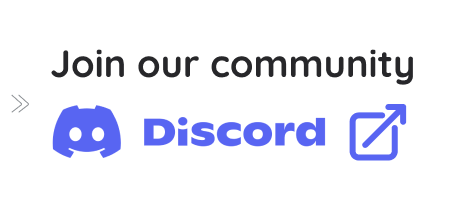Why Generative AI won't replace human creativity
Several significant advances in AI technology have occurred over the last decade. There is now an AI for almost any computer application you can think of. One of the newest additions to the AI umbrella, generative AI, is already sweeping the industry by storm.
As it's increasingly getting better, many people have raised the concern of whether generative AI would replace human creativity. Is it only a tool like any other? Continue reading to find out!
What is generative AI?
According to McKinsey, the term generative artificial intelligence (AI) refers to algorithms (such as ChatGPT) that can generate new material such as audio, code, pictures, text, simulations, and videos. Recent advancements in the industry have the potential to radically alter our approach to content development.
Generative AI in the creative industry
Generative AI has the potential to revolutionize the creative industry. Its capacity to generate original visual and textual content makes it a great tool in the creative area. And, as AI technology advances, more and more creative workers are incorporating it into their work. Here are some examples of how creatives use generative AI.
Videography and photography
Photographers and videographers used to have to carefully discover the ideal camera angles, lighting setups, and special effects. Many pros in the sector are already utilizing generative AI skills to arrange the best camera and lighting settings for a shot and seamlessly edit their work. Filmmakers all around the world have started to embrace generative AI in their day-to-day work, most notably the Seinfeld spoof comedy "Nothing, Forever," which employs generative AI to build the script and has almost 100,000 followers.
Music creation
Imagine being able to create new and original music on the spur of the moment without even needing to engage your creativity. Well, generative AI can help with that. This technique is used by many music producers to create new melodies, chord progressions, and percussion patterns. Harnessing AI capabilities additionally allows artists to explore new kinds of music and experiment with new sounds with more precision and efficiency.
Writing
A SEMrush survey found that 12% of businesses are currently utilizing AI to produce content. This trend is mostly driven by a scarcity of human authors capable of producing competent and insightful material on themes critical to a company's marketing strategy.
Journalists and creative writers, for example, have profited from the capacity to produce new and distinctive ideas, summaries, headlines, and even complete scenes. As a consequence, authors can now create more interesting material in less time.
Fashion design
The fashion business is a competitive one. Fashion designers must continually modify their style to keep up with evolving trends and even set new ones in order to remain competitive. Fashion designers have also employed generative AI tools to develop unique designs, patterns, and even full garment pieces.
Incorporating generative models in the fashion and design industries may have a beneficial influence on the business by allowing for the creation of more original and boundary-pushing designs that would otherwise be hard to accomplish manually.
Visual arts
Generative AI is set to change the field of visual arts by opening up new avenues for seamlessly producing, editing, and improving images and films. Artists, photographers, and graphic designers may utilize generative AI models to generate new pictures or edit existing ones in novel ways.
Take, for example, OpenAI's DALL-E. This cutting-edge language model can produce high-quality, one-of-a-kind pictures from written descriptions. Numerous visual artists are already use the concept to produce new pictures and edit current images in ways that would be difficult, if not impossible, to do manually.
Human creativity cannot be replaced by generative AI
Generative AI is a strong tool for creating original and captivating content. However, despite its numerous benefits and prospective applications, AI cannot replace human ingenuity. It can only imitate originality by generating art based on prior works. Here are six reasons why artificial intelligence cannot replace human creativity.
Generative AI is only as good as the data on which it is taught
Generative AI algorithms are very adept at developing new art forms. They may, however, only create this material based on their training data. AI, unlike humans, cannot properly comprehend or interpret the meaning of data. Instead, it produces results based on the statistical patterns it discovers during training. Simply said, AI cannot comprehend the world in the same way that humans do, and cannot develop material that resembles human thoughts or feelings.
AI does not have the same amount of spontaneity and intuition that humans do
Coming up with fresh ideas is part of the creative process. Although AI may develop new material, it is mostly built on modifications of already published works, particularly those programmed into it during the training phase.
Furthermore, AI, unlike humans, cannot 'think outside the box.' It will always be constrained by the constraints of its training data. To match human creativity, AI would have to generate fresh concepts and ideas, which it is just incapable of doing.
AI is lacking in emotional intelligence
The ability of humans to grasp and apply emotions into the creative process distinguishes them from AI. As a consequence, appealing pieces of art are created that not only carry the desired message but also'speak' to the viewer.
Although AI approaches human creativity when it comes to developing compelling material, it lacks emotional intelligence and so cannot completely appreciate the emotional effect of its works. The end result is decent material that appears to have been written by a person, but it has one big flaw: it does not emotionally connect the audience.
AI cannot completely comprehend the context of a work of art
Understanding the context in which a specific piece of work is developed is fundamental to human creativity. Every work of art, regardless of its form, has a contextual foundation rooted in historical, cultural, and social relevance.
While AI may be designed with some context knowledge, it cannot completely comprehend, respond to, or mimic the complexity of human context.
The spontaneity of human intellect is lacking in AI
Humans can generate novel and innovative ideas on the go. This important feature of human creativity allows us to think outside the box and come up with unexpected and new solutions to issues.
Unfortunately, AI is limited by the amount of training data available. As a result, generative AI systems generate content based on the patterns and correlations discovered in training data. In essence, AI models can recognize patterns and make predictions, but they cannot produce new ideas outside of the data set on which they were trained.
The human touch is missing in AI
Humans have an emotional and personal connection to their job, which AI cannot mimic. This human touch imbues each work of art made by a human with a soul that is distinctive to the artist.
Furthermore, human creativity is not constrained by finality. Any work of art made by a human is part of their path to greater self-awareness via experimentation, failure, learning, and, ultimately, development. In contrast, because AI lacks the ability to learn, evolve, or fail, it may continue to produce monotonous content that falls short of human ingenuity.
Final thoughts
Although generative AI algorithms are making progress in the creative sphere, they have a long way to go before they can fully recreate the richness and diversity of human mind. AI will always struggle to duplicate human creativity unless it can grasp context, emotions, personal experiences, and spontaneity.
As a result, despite the impending concern that AI will soon replace human labor in the creative industry, it has a long way to go.
Meanwhile, we can take advantage of the current stage of generative AI development and investigate the various ways it might assist us in our creative activities. However, generative AI has the potential to be a beneficial tool for people in the creative area by making their job faster and easier. Generative AI has the potential to transform the way we approach creative work, from creating new ideas to aiding with the design process.
With this in mind, Worldwide AI Hackathon has come up with the Generative AI applications competition that challenges students, developers, AI enthusiasts and AI startups alike to use Generative AI to create innovation solutions to real world problems.










